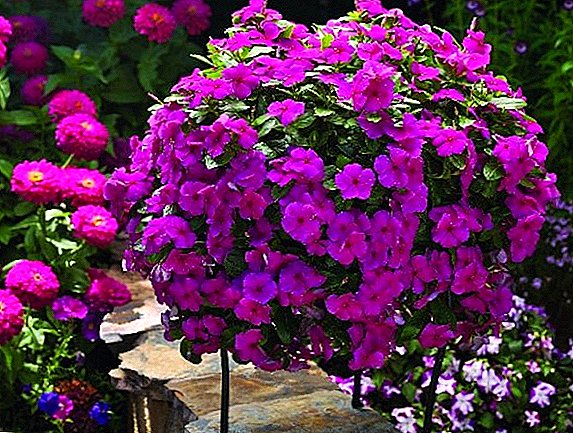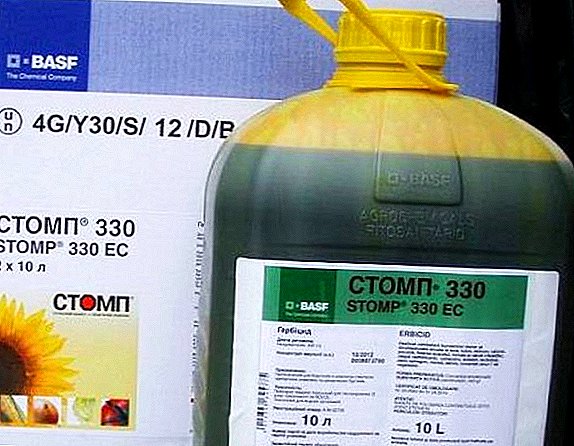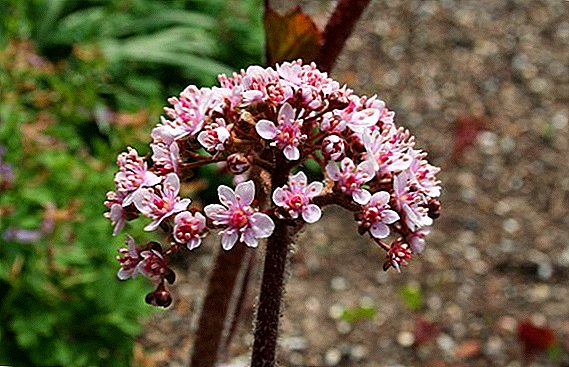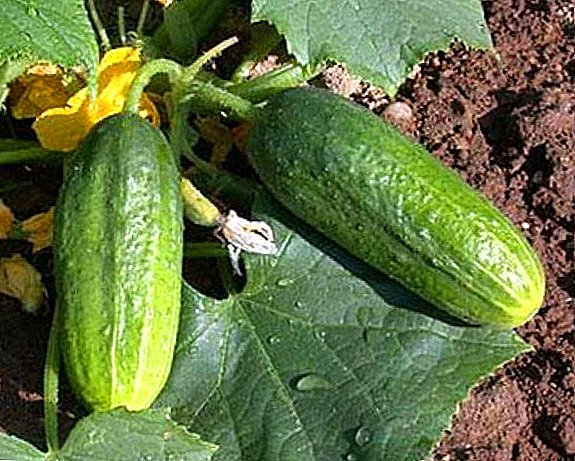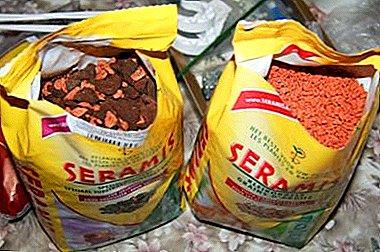
Flower shops offer substrates for orchids in great abundance. But their quality leaves much to be desired. The situation has changed with the appearance on the market of the soil mixture brand Ceramis.
The soil does not contain harmful substances, allows the roots of the plant to breathe easily. Before buying, you need to find out the composition of the substrate and find out whether it is suitable for growing orchids of all kinds. Let's talk about the properties of Ceramis and its benefits for flowers in our article. You can also watch a useful video on this topic.
What it is?
Components for Ceramis supplies Germany. Recently, this substrate has become popular in Russia. In Western Europe, it is actively used when planting pot plants.
 Small clay granules porous and light. They actively absorb excess moisture. Soil does not lose its properties regardless of operating conditions and time.
Small clay granules porous and light. They actively absorb excess moisture. Soil does not lose its properties regardless of operating conditions and time.
Unlike other soil mixes, Ceramis provides good air exchange in a pot.. With such a substrate, orchids feel comfortable and enjoy healthy growth and abundant flowering.
If the soil is not fully used after transplantation, it is provided with proper storage in a dry, dark place.
We recommend to watch the video about Saramise for orchids:
Composition
Complex Ceramis is a substitute for natural soil for orchids. The substrate is made from baked clay and bark. The composition includes useful NPK micronutrients:
- Phosphorus.
- Potassium.
- Nitrogen.
The particles of clay granulate absorb watering moisture like a sponge and distribute it throughout the pot. Thanks to the safe accumulation of liquid plants are protected from rotting roots.
Substrate granules of different sizes. This makes it possible to save the life of even a small process with undeveloped roots.
Advantages and disadvantages
As with any finished soil mix, Ceramis can have both advantages and disadvantages. Positive qualities of the substrate:
- Preservation of its original structure, regardless of time.
- Easy to use when transplanting plants.
- No need to replace the soil several times a season.
- Elimination of pot leakage. The substrate can be poured into the pot without drainage holes.
- The possibility of reuse in the event of the death of a plant in a pot. The mixture is washed and "baked" in the oven for half an hour.
- Reducing the risk of fungi and mold.
Saramis can be used for many years in unlimited quantities. The plants are transplanted into the prepared soil without cleaning the roots from the ground, and they quickly get used to the new place. Deficiencies in this soil mixture is not detected.
Saramis is a universal granulate for orchids that feed on air (epiphytic plants). Such a ground is suitable for landing both Wanda and Phalaenopsis.
Features of landing in soil mix
 Orchid transplantation is a responsible task for both beginners and experienced flower growers. In order for the plant to settle down and delight in lush flowering, it is important to clearly follow the rules of transplantation.
Orchid transplantation is a responsible task for both beginners and experienced flower growers. In order for the plant to settle down and delight in lush flowering, it is important to clearly follow the rules of transplantation.
Orchid is transferred to the substrate only after it blooms.. Peduncle cut to restore vitality after transplanting.
Before performing work prepare inventory:
- Manicure scissors or garden pruner.
- New pot, exceeding the size of the former.
- Soil of a series of Ceramis.
- A tablet of activated carbon or bactericidal preparations for treating cutting sites. This will save the orchid from death.
Plastic, ceramic pots, glass and even metal containers are suitable for filling with Ceramis.. Metal containers inside are lined with foil to avoid oxidation.
The flower is removed from the old pot with great care so as not to harm the fragile root system. To facilitate this task, the orchid is not watered before planting. The roots of the former soil is not necessary to clear. Further actions are performed sequentially:
- Examine the root system of the flower in order to identify lesions. When a pest is detected, the plant is immersed in filtered warm water. For the final destruction of parasites use special preparations.
- Diagnose the roots. Decayed and dried cut with scissors or shears. The cut sections are treated with bactericidal compounds or activated carbon.
- Remove yellow and lifeless leaves and soft hollow bulbs. The cut sites are disinfected.
- Orchid roots dried for eight hours.
- Prepare the tank for the plant - carry out disinfection, lay the drainage layer.
- After 8 hours, the flower is carefully placed in the middle of the pot, filling the voids with the Ceramis soil mixture. The ratio of soil and rhizomes planted orchids should be 2: 1. Aerial roots do not fall asleep.
The substrate is placed in a container with a flower so that it does not hang.. The soil does not tamp.
We recommend watching a video about orchid transplanting in Ceramis:
Growing a flower in the substrate
Orchids planted in the substrate, it is necessary to provide proper care so that they recover faster. After transplantation, the pot with the plant is left in the same place or transferred to the east window. Basic rules for caring for a flower in Saramis:
 The first watering after transplantation to carry out after 4-5 days. To humidify use clean warm water.
The first watering after transplantation to carry out after 4-5 days. To humidify use clean warm water.- Keep the orchid out of direct sunlight.
- Maintain temperature in the range of plus 20 to 22 degrees.
Watering orchids growing in Saramis, produce no more than 1 time in 20 days. For a better orientation in the pot set the humidity indicator. Blue indicates a good fluid balance. Red indicates the need for watering.
Board: In order for the flower to settle down faster in a new place, a complex fertilizer of the same series is added to the irrigation water.
In this way, Saramis is a good complex substrate suitable for breeding all members of the orchid family.. It only positively affects the development of orchids.
Conclusion
The granular composition allows the roots to breathe easily. When watering, all excess liquid absorbs porous granules. Ceramis is also used for resuscitation of a sick flower. He will recover and delight the abundance of flower stalks and buds.


 The first watering after transplantation to carry out after 4-5 days. To humidify use clean warm water.
The first watering after transplantation to carry out after 4-5 days. To humidify use clean warm water.




